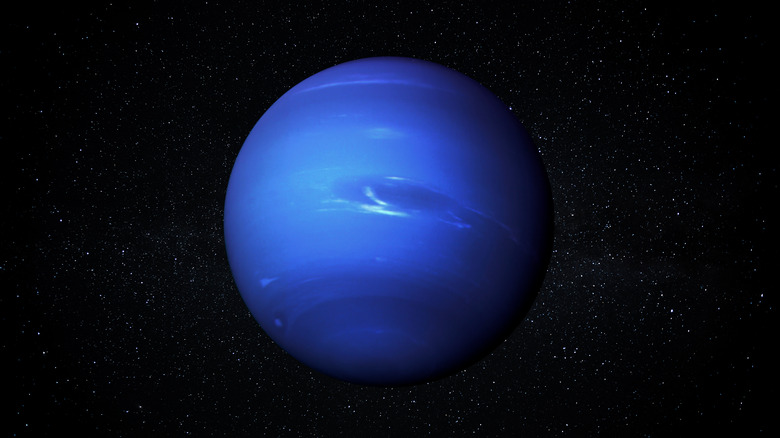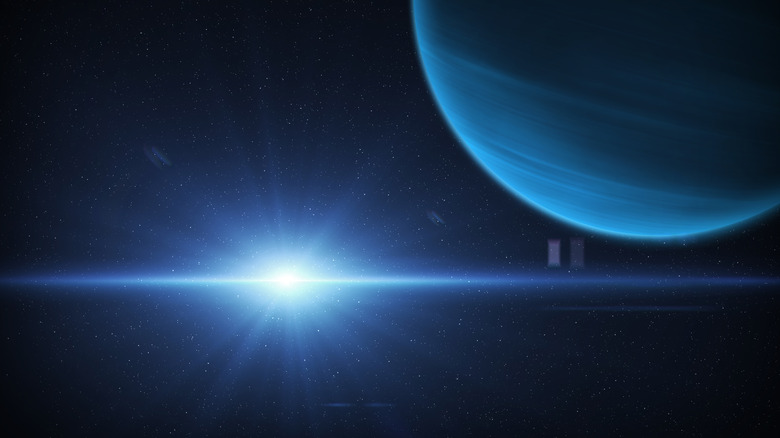Neptune Gets Rainfall Made Of Diamonds. Here's Why
It could make for the greatest get-rich scheme in history, but you need to hitch a ride to Neptune to do it. Yep — scientists think it's raining diamonds on the eighth-farthest planet from our sun. There may be plenty to go around, however, as the 'Ice Giant' is the fourth-largest planet in diameter located in our solar system.
For over 40 years, both astronomers and physicists have suspected diamonds rain down in the center of the planet, though Voyager 2, the lone space mission probe to have flown by the planet, did not prove the popular hypothesis — but we also have yet to land a spacecraft, let alone develop an intricate-enough ground-based telescope, to confirm it (via American Scientist).
The idea of raining gems was first introduced by Marvin Ross in 1981. He suggested that hydrocarbons, like methane, were separating at extreme temperatures inside the icy planet, resulting in cluster formations of isolated carbon atoms, which could be assembled into a diamond-like structure, considering the conditions.
The possibility of precious stones raining from the skies stems from the popular belief that diamond precipitation also emits gravitational energy waves, which convert to frictional heat between both the diamonds and themselves, as well as atmospheric materials.
The outermost planets, like Neptune, bear fruitful information as to what may have played a part in creating our universe, but also in what planets, including those found in the Milky Way, may provide in possibly sustaining life (via American Scientist).
New evidence may confirm it rains diamonds on Neptune
Neptune is referred to as an 'Ice Giant' because its outer layers are made of helium and hydrogen. The methane in the atmosphere creates its exterior bluish hue. The 'ice,' in astronomy terms, refers to the compounds of elements that contain hydrogen. The water, ammonia, and methane make it icy (via American Scientist).
Neptune's hydro-helium atmosphere has paved the way for the belief that its gravity compresses interior ice at a high density, and heat raises temperatures, mixed with extreme pressure, to form a hot and icy precipitation of diamond formations.
An experiment, courtesy of the Linac Coherent Light Source (LCLS) X-Ray Laser, housed at the SLAC National Accelerator Laboratory, offered the most exact measurements to date on the possible diamond-making process that occurs on Neptune (via Science Alert).
The experiment report proclaimed "carbon transitions directly into crystalline diamonds." Mike Dunne, the director of the LCLS stated, "This research provides data on a phenomenon that is very difficult to model computationally; the 'miscibility' of two elements, or how they combine when mixed. Here (in this case) they see how two elements separate, like getting mayonnaise to separate back into oil and vinegar."
The experiment is important in revealing just how strange the planet actually is because of the hot center of the icy planet. Due to the gravitational energy emitted, it could confirm the previous hypothesis that the heat and friction, along with the materials around them, are forming diamonds.

